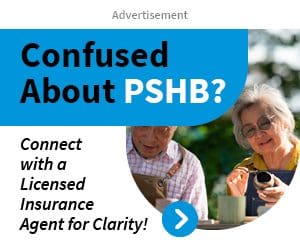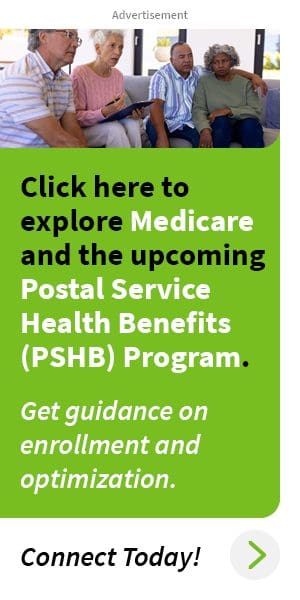Key Takeaways
-
The transition to the Postal Service Health Benefits (PSHB) program introduces new rules and opportunities, impacting how postal workers and retirees manage their healthcare.
-
Understanding Medicare integration and the enrollment process is key to making the most of your PSHB plan in 2025.
Navigating the New Healthcare Landscape for Postal Workers
The rollout of the Postal Service Health Benefits (PSHB) program has brought significant changes for USPS employees, retirees, and their families. Designed specifically for postal workers, PSHB replaces the Federal Employees Health Benefits (FEHB) system, marking a pivotal shift in how healthcare is provided and managed. Let’s dive into what these changes mean for you and how you can adapt to the new system.
Why the PSHB Program Exists
The PSHB program is part of broader efforts to ensure that postal workers receive tailored healthcare benefits that align with the unique demands of their jobs. It addresses the need for cost-effective plans while integrating Medicare benefits for eligible retirees. This change not only streamlines healthcare coverage but also provides opportunities for cost savings and enhanced benefits for those who understand how to navigate the system effectively.
Key Dates and Deadlines You Need to Know
Adapting to the PSHB changes means keeping track of important timelines. Here’s what you need to know:
-
Open Enrollment Period: The Open Season for PSHB enrollment ran from November 11 to December 13, 2024. During this window, you could enroll in or switch plans for coverage beginning January 1, 2025.
-
Qualifying Life Events (QLEs): After Open Season, changes to your plan are only allowed if you experience a QLE, such as marriage, the birth of a child, or retirement.
-
Medicare Integration Deadlines: If you’re eligible for Medicare, enrolling in Medicare Part B is a crucial step for maintaining your PSHB coverage. Specific exemptions apply, so it’s important to review your eligibility carefully.
Medicare Integration: What It Means for You
If you’re already Medicare-eligible, integrating Medicare Part B with your PSHB plan is essential. This requirement applies to most retirees and their eligible family members but comes with notable exceptions:
-
Exemptions: Retirees who left the workforce on or before January 1, 2025, and employees aged 64 or older as of this date are not required to enroll in Part B.
Medicare integration provides several benefits, including reduced deductibles and comprehensive coverage. Some PSHB plans even reimburse a portion of your Part B premiums, helping offset costs. Make sure to check your plan’s specifics to maximize these benefits.
Making Sense of Costs and Coverage
One of the biggest concerns during this transition is understanding how costs and coverage have changed. Here are the key updates:
-
Premiums: While the government continues to contribute a significant portion to premiums, you’ll notice adjustments depending on the plan you choose.
-
Deductibles and Coinsurance: The integration of Medicare often leads to lower deductibles, especially for retirees who take advantage of Medicare Part B.
-
Prescription Drug Coverage: PSHB automatically enrolls Medicare-eligible retirees in a Medicare Part D Employer Group Waiver Plan (EGWP), simplifying access to prescription medications.
How to Choose the Right Plan
Selecting a PSHB plan might feel overwhelming, but breaking it down into steps can help:
-
Assess Your Needs: Evaluate your healthcare needs, including anticipated doctor visits, medications, and specialized care.
-
Review Plan Options: Use the plan comparison tools available during Open Season to understand the differences in premiums, coverage, and network providers.
-
Consider Medicare Integration: If you’re Medicare-eligible, focus on how each PSHB plan aligns with your existing Medicare benefits.
-
Seek Advice: Reach out to your HR department or a benefits counselor for personalized guidance.
Understanding Prescription Drug Benefits
The PSHB program enhances prescription drug coverage by automatically enrolling Medicare-eligible participants in an Employer Group Waiver Plan (EGWP). This ensures:
-
Simplified Access: No need to enroll separately in Medicare Part D.
-
Lower Costs: Reduced out-of-pocket expenses for high-cost medications.
-
Convenient Payment Options: Flexibility to spread prescription costs over time with the Medicare Prescription Payment Plan.
If you’re not Medicare-eligible, your PSHB plan still provides robust prescription drug benefits. Review your plan details to understand your formulary and copayments.
Retirees: What You Need to Do Now
If you’re a retiree, adapting to the PSHB program requires a few proactive steps:
-
Verify Your Enrollment: Ensure you’ve been transitioned to the appropriate PSHB plan.
-
Check Medicare Enrollment: If you’re eligible for Medicare but haven’t enrolled in Part B, do so promptly to avoid losing coverage.
-
Review Benefits: Familiarize yourself with your plan’s specific benefits, including dental, vision, and hearing coverage.
Current Employees: Preparing for the Future
For active USPS employees, the transition to PSHB represents an opportunity to secure better healthcare benefits:
-
Understand Your Options: Use the tools provided during Open Season to select a plan that meets your needs.
-
Plan for Retirement: If you’re approaching retirement, consider how Medicare integration will impact your healthcare costs and coverage.
-
Stay Informed: Keep an eye on updates and communications from USPS regarding the PSHB program.
Special Considerations for Families
Your family’s coverage under the PSHB program depends on your eligibility and enrollment status:
-
Medicare-Eligible Family Members: Spouses and dependents who qualify for Medicare must also enroll in Part B to maintain PSHB coverage.
-
Non-Medicare-Eligible Members: Coverage continues under the PSHB plan without requiring Medicare enrollment.
-
Coordination of Benefits: Ensure that your PSHB plan and Medicare work together seamlessly by updating your information with both programs.
Avoiding Common Pitfalls
Transitioning to a new healthcare system can be challenging. Here are common mistakes to avoid:
-
Missing Deadlines: Stay on top of Open Season dates and Medicare enrollment deadlines to ensure uninterrupted coverage.
-
Overlooking Plan Details: Read the fine print on deductibles, copayments, and out-of-pocket maximums to avoid surprises.
-
Assuming Automatic Enrollment: While many transitions occur automatically, double-check your enrollment status to prevent gaps in coverage.
Maximizing Your Benefits
To get the most out of your PSHB plan, consider the following:
-
Take Advantage of Preventive Care: Most PSHB plans cover preventive services at no additional cost, so schedule regular check-ups and screenings.
-
Use In-Network Providers: Staying within your plan’s network helps minimize out-of-pocket costs.
-
Track Your Expenses: Keep a record of healthcare costs to identify trends and adjust your plan selection if needed during the next Open Season.
Looking Ahead
As you settle into the PSHB program, remember that adjustments and updates are part of the process. Staying informed and proactive ensures that you’ll make the most of your benefits while navigating this new system.
Adapting to a New Era of Healthcare
The transition to the PSHB program represents a significant change for postal workers and retirees, but it also opens doors to enhanced healthcare benefits and cost-saving opportunities. By staying informed and proactive, you can ensure a smooth transition and secure the coverage you need.










